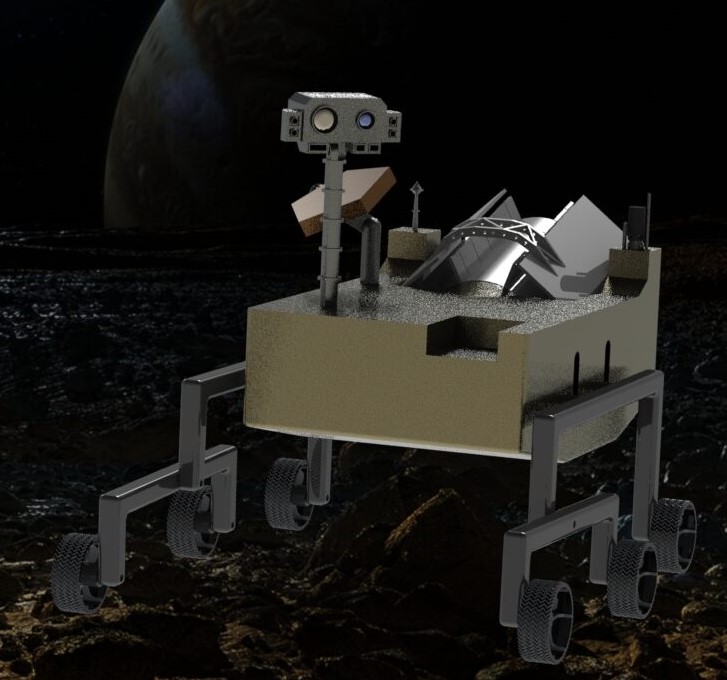Hypothesized Surface: Robotic Explorer – MSU
INSTITUTION
Michigan State University
CLASS
Copper Class (Fall 2021)
STUDENT TEAM
James Provax, Mechanical Engineering
Justin Yan, Mechanical Engineering
Josh Bravo, Mechanical Engineering
Tahha Zahid, Mechanical Engineering
Aaron Rakowski, Mechanical Engineering
ACADEMIC GUIDANCE
Dr. Lik Chuan Lee, Associate Professor, College of Engineering, MSU
PROJECT DESCRIPTION
The NASA Psyche mission is set to launch in 2022 and arrive at the asteroid in 2026. It is an orbiter mission and will not land on the surface. It is possible to imagine, however, that after learning about Psyche from orbit, there may be scientists and engineers interested in proposing a subsequent mission to actually land on the asteroid. Designing to the range of hypothesized surfaces and terrain that might be found at Psyche (and keeping in mind other constraints such as its gravity), the team considered this future possibilitiy and designed a robotic explorer capable of traversing the hypothesized surfaces of the asteroid.
Psyche’s unique characteristics served as the constraints of the robotic explorer design. The hypothesized nickel-iron component of the surface dictated the material used for wheel and tire design. The topography of Psyche’s surface may consist of sharp crater rims and large angles of repose of slopes and hills. These features were taken into consideration to ensure the robotic explorer could navigate any challenging terrain. Additionally, Psyche’s low gravitational field in comparison to Earth and Mars impacted the entire design of the robotic explorer.


